With such a massive canvas of storytelling potential in the Star Trek franchise, there are obviously a myriad of ways to tell smart, engaging and economical standalone stories to add value to the Paramount+ streaming platform and their millions of subscribers. And it is our sincere hope that it will happen in the near future, as the studio undergoes a regime change with their soon-to-be new leaders at Skydance.
Unfortunately, in taking the franchise’s first steps into the streaming movie territory, Star Trek: Section 31 is a major misstep. There is just no other way to possibly frame this joyless, derivative, hot mess of a film.
In obviously attempting to appeal to a wider audience by capitalizing on the universal popularity of star Michelle Yeoh, the film has missed the mark in every direction; failing to be interesting as an action movie, as science fiction, as a heist film, and, sadly, and most poignantly for most of you reading this, as a piece of Star Trek.
And it’s that last piece that is the most frustrating.
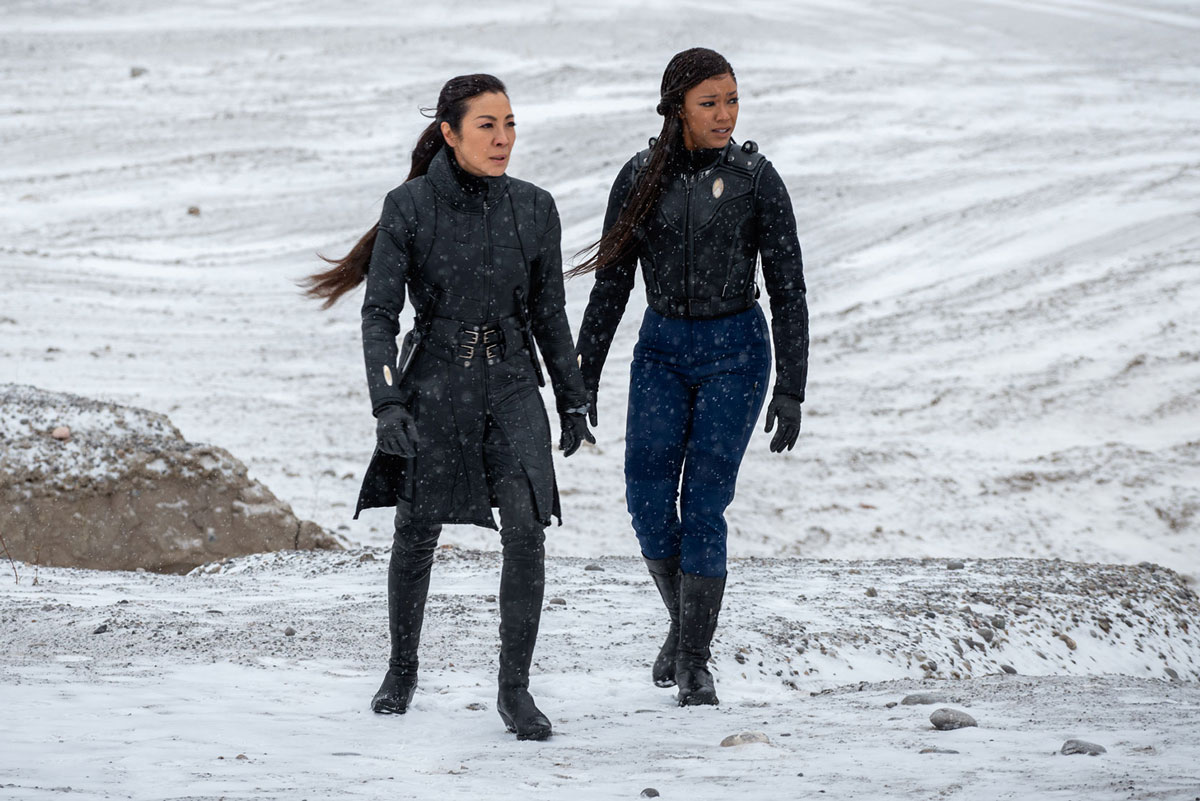
Star Trek: Discovery was a great Star Trek series. It forged itself into new and different storytelling mechanisms to broaden the scope of the Trek universe through the journey of Michael Burnham — And a big piece of that journey was the tutelage of Yeoh’s Emperor Georgiou, who, through highs and lows, through time travel and universe hopping, found a redemption arc that felt wholly realized in the series (yes, even for a tyrannical, genocidal Terran emperor).
All of that is basically dismissed in the Georgiou we meet in this film. The reasoning for this is literally inexplicable — beyond the production team arbitrarily trying to create an A-Team like romp to showcase the venerable action star — while summarily dismissing all the important character development that took place for Georgiou in her 20-some-odd appearances in Star Trek: Discovery.
(And sadly, even the simplistic joy of an A-Team like smash-and-grab action romp is nowhere to be found in this film either.)
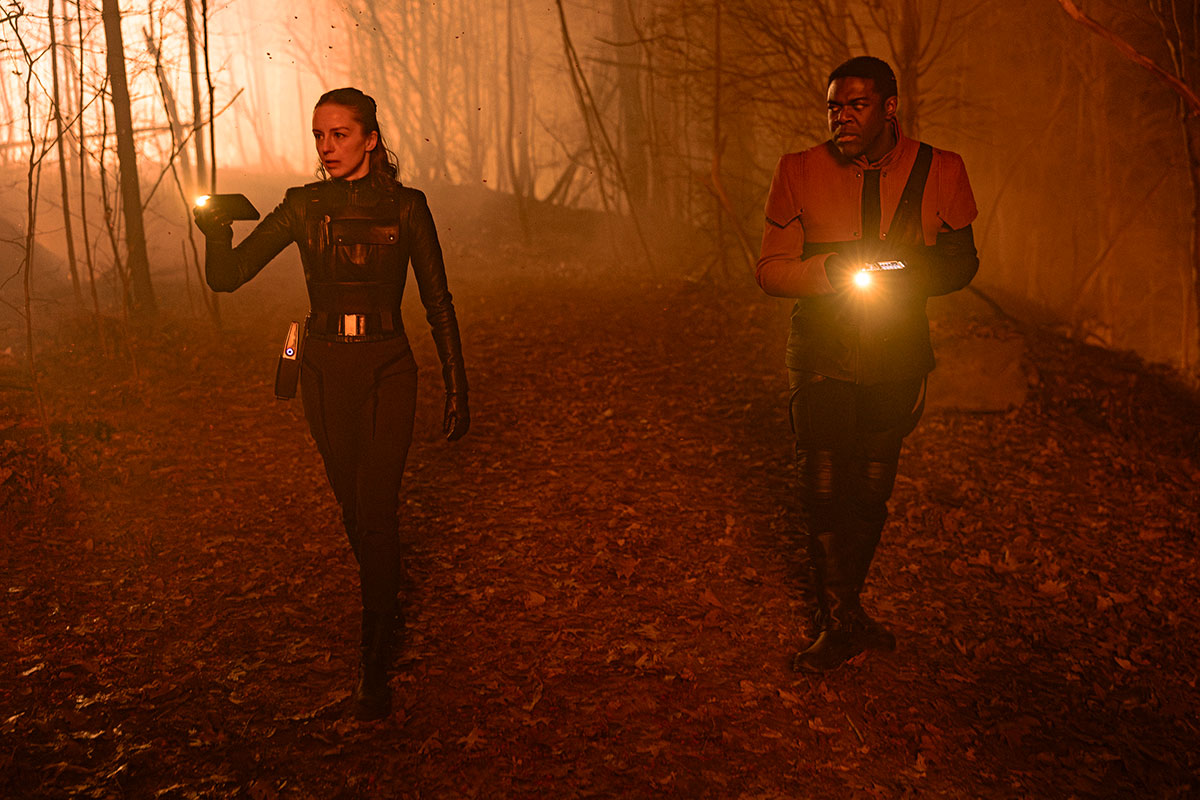
As far as we can tell, all the trials and tribulations Georgiou went through in Discovery have led her to apparently settle in the early 24th century (why, Carl?), and once again become the boss of what seems to be some kind of upscale den of scum and villainy. This is the same vocation she chose immediately after arriving in the Prime Universe at the end of Discovery Season 1.
Both of these choices are completely nonsensical from the point of view of a Star Trek narrative… but worse, they just aren’t any fun. (Kind of like this review. Sorry.)
There are a few bright spots in the new cast, with Sam Richardson shining as Quasi the Chameloid and Kacey Rohl bravely embodying the much beloved Rachel Garrett, the latter included as a character here for absolutely no discernible purpose. But Kacey rolls with the punches and does well with what she is given, and the portrayal thankfully does nothing to diminish the reputation and popularity of the iconic Enterprise-C captain introduced in “Yesterday’s Enterprise.”
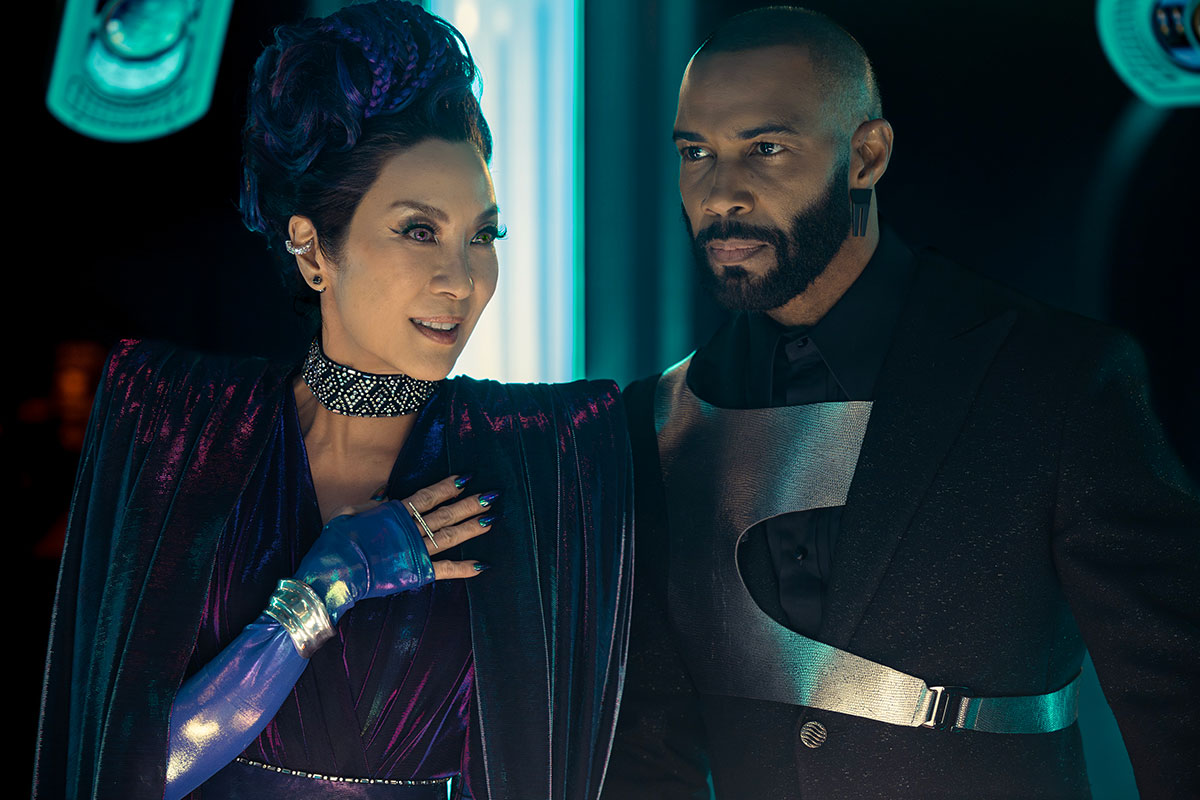
Additionally, Rob Kazinsky gamely suits up as Zeph in his massive body armor, and like Richardson and Rohl, the British actor does his best to elevate the exposition-heavy script that really just has our gang of misfits spinning in circles from one set-piece “discussion quest” to another.
The remaining supporting characters run the gamut from “had potential” to “sadly ridiculous and unoriginal.” Humberly González looks the part as the Deltan femme fatale Melle, but is dispassionately killed in the first scene, so, yeah, not sure what the point of that was.
Omari Hardwick’s augment backstory as Alok Zahar had some very legitimate potential — and arguably was one of only two points in the film where it felt like there was a chance we were actually going to get a little Star Trek in this Star Trek movie — but it dissipated into nothing, like so many elements of this production.
The other Star Trek idea in the movie was the addition of the aforementioned Rachel Garrett, but that potentially-thrilling inclusion went nowhere. There was absolutely no reason for this movie to take place in the “lost era” of the post-Star Trek VI time period — and save for a quick mention of a stardate, there is barely any reference to when the film is taking place in the Star Trek timeline.
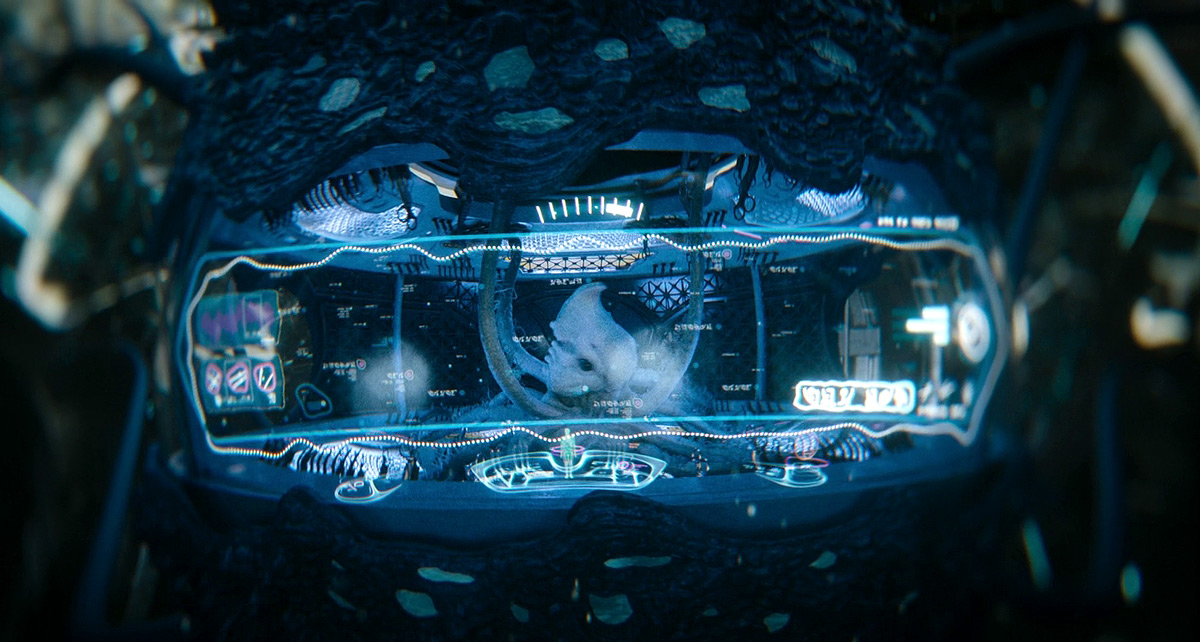
Honestly, the entire “Godsend” storyline timeline needs a common-sense lifeline, because it makes no sense. But worse than that, it telegraphs how the production surrounding the film isn’t even bothering to try and have it make sense.
And finally, the less said about the character Fuzz, the better. Derivative only begins to scratch the surface of this silly Men in Black knock off. And the choices made by Sven Ruygrok in bringing the Vulcan robot and the nano-bug Wisp to life, respectively, certainly didn’t help.
In a smaller, less-flashy production, this film’s structure might have actually worked to its advantage — with the movie being broken into basically three relatively contained chapters in which our oddball Section 31 characters all wordsmith a problem together with some long-winded exposition that is too infrequently clever or entertaining. (And I love long-winded exposition. But not here.)
The cast and filmmakers for Section 31 have talked about the unique aspect of this Trek film production having quite a bit of opportunity to improvise dialogue and lines, and you can see that in these moments, but against the bombastic, over-the-top, flashy style of the film — and Emperor Georgiou herself — it never really works, feels earned, or seems authentic. The drama around the drawn-out conversations could have been something more impactful, but that was obviously never in the offing for a project with such a turgid tone as this.
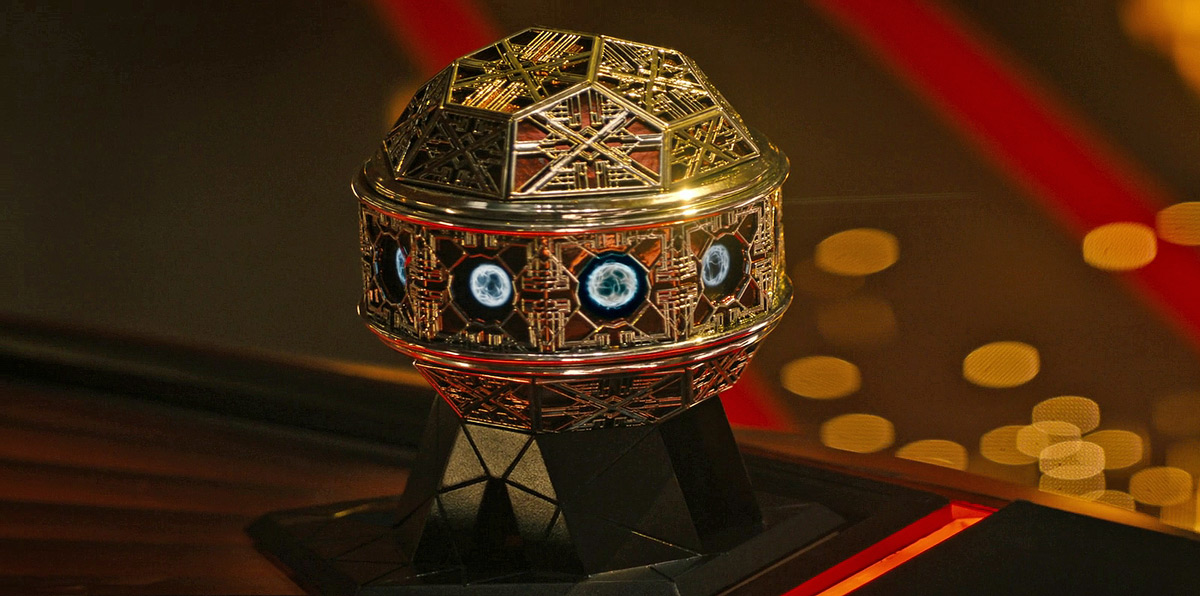
In the first set-piece, entitled “One Night at the Baraam,” we are introduced to the eccentric Section 31 crew as director Olatunde Osunsanmi whips the camera around the room way too deliberately to seemingly get to the end game quickly — where each operative’s cover is immediately made out by not only Georgiou, but also by the audience, your significant other in the kitchen, and your next door neighbor who just got home from work.
The introduction of the Godsend weapon is only slightly less clunky and leads us to the second chapter of the film, “The Godsend,” where we start to get a feel for how unsophisticated this script truly is with uninspired lines like: “So that’s why you’re hiding in a bar in the ass-end of nowhere,” “She’s got a stick so far up her backside it’s coming out her mouth,” and “Where fun goes to die” (which is where that dreadfully-overused last line needs to go).
A few references to Minos Korva, Turkana IV and “not getting your Prime Directive in a bunch” is not going to cut it when your script needs this much tripolymer polish.
The final chapter is called “The Passageway,” and if I told you the high point here might actually be when the Godsend weapon started its countdown when it accidentally gets kicked off a table, I would only be exaggerating — slightly. (Sigh.)
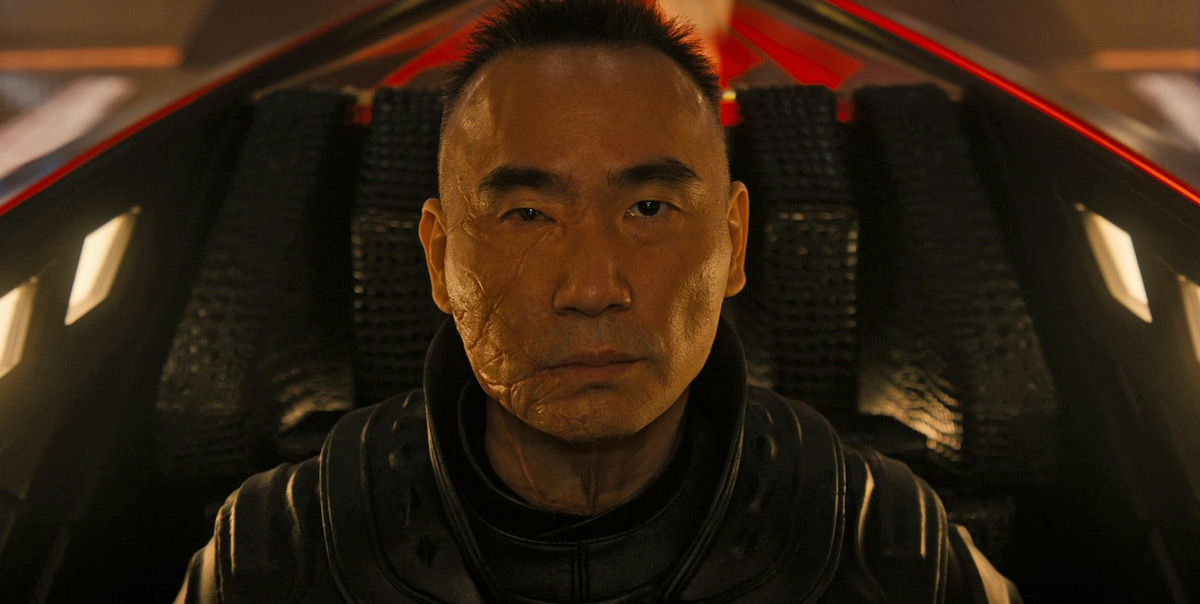
Actually, the high point in the final act is the inclusion of the excellent James Hiroyuki Liao as San, a character teased way back in the Discovery episodes “Scavengers” and “The Sanctuary.” Liao (who actually made his Trek debut as a background bridge officer in Star Trek Into Darkness) gets a much meatier role here as Georgiou’s lost love from her childhood in the Mirror Universe.
Ultimately, the plot of the film centers on San’s convoluted plans to destroy the Federation with Georgiou’s Godsend weapon, take over the Terran Empire, and then invade the Prime Universe. I think I got that right, but I might have missed something while wondering why San isn’t about 60 years older than Georgiou since it’s been about that long since Discovery left the 23rd century back in 2259!
That age discrepancy can obviously be easily explained away with a simple line of dialogue about universe and time-jumping off screen — but at this point in the film it’s way less about clarifying any of that and instead wondering why the production team just doesn’t seem to care about any of it aligning. It’s all just a big mess.
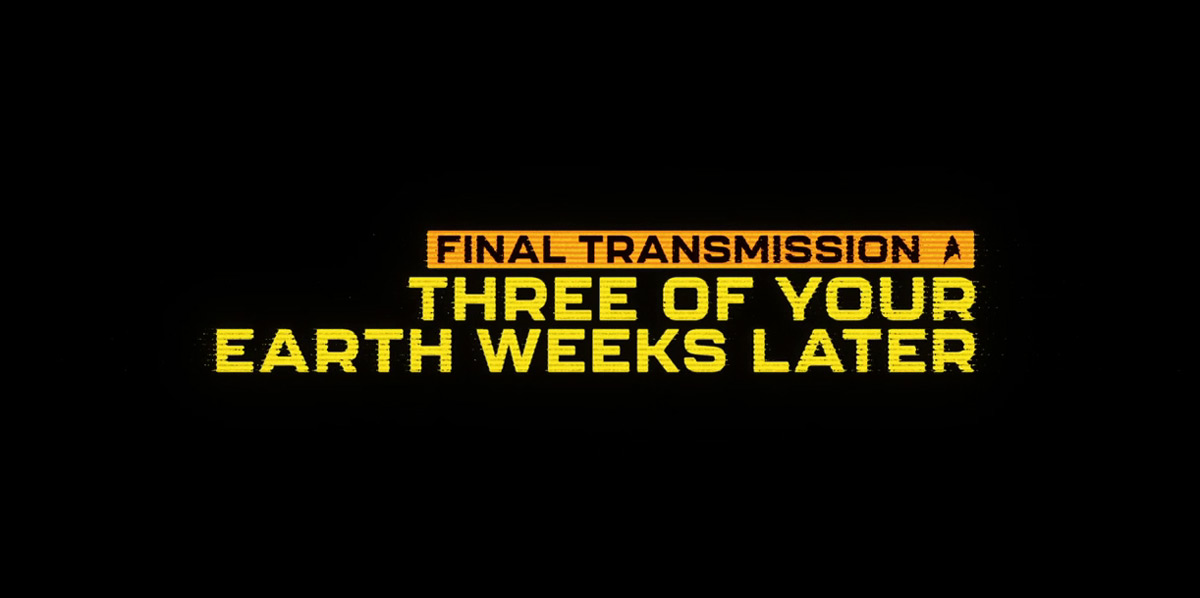
In the end, it is more than fair to give this movie some credit for trying something new and trying to have some fun with the characters and casting. It tries to go mainstream by showcasing Michelle Yeoh and making it a relatively consumable, standalone adventure, but when all is said and done none of it comes together. And frankly, the biggest culprit for why it doesn’t come together is the complete lack of any coherent Star Trek narrative.
Since 1966, Star Trek has been morality tales. And Star Trek has been big grand space operas. And Star Trek has been an amazing anthology that can tell any kind of story in any kind of format. But the main reason it has been so successful over 60 years and 900-plus episodes is because it is a modern-day mythology that incredibly tells one connected narrative across that massive history.
Unfortunately, Section 31 lost sight of that history while putting its pieces together.
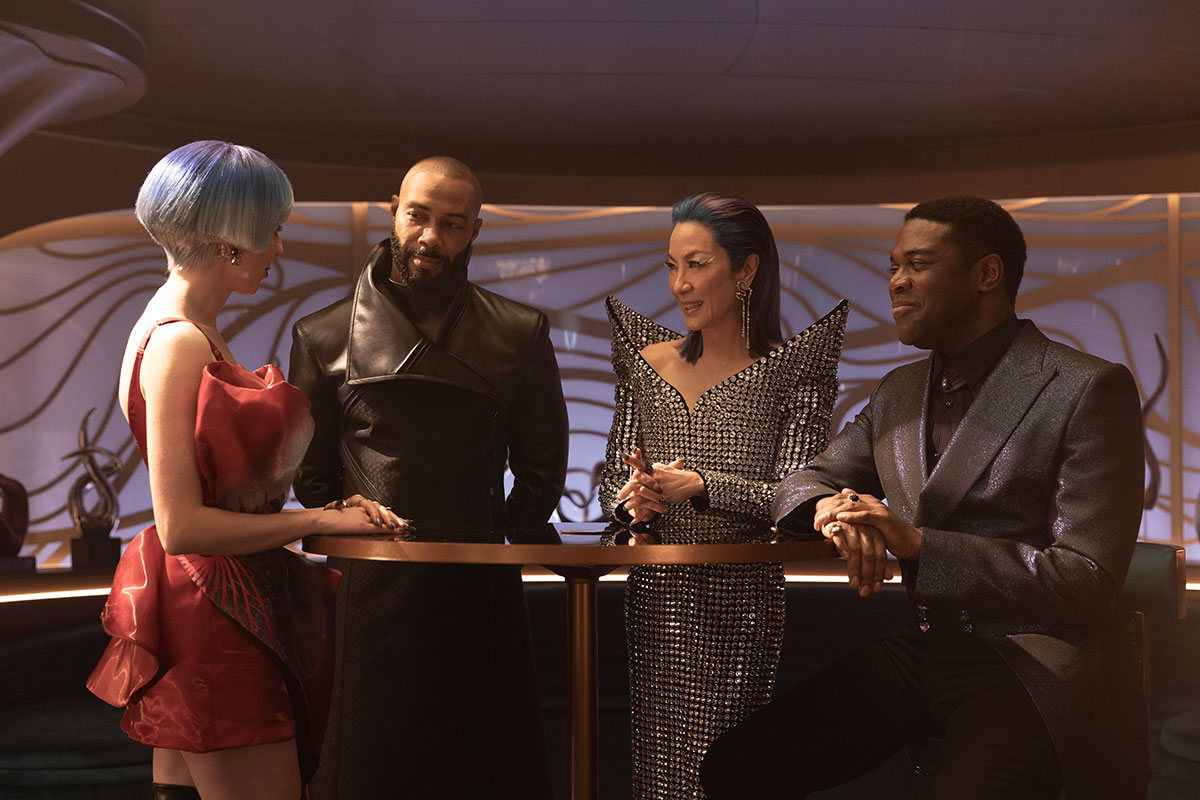
There are still plenty of standalone Star Trek stories that could be told in this format in clever, engaging and economical ways — and hopefully the powers that be will learn from this misstep and be encouraged to try again to add value to their platform and their millions of subscribers.
Jim Moorhouse is the creator of TrekRanks.com and the TrekRanks Podcast. You can contact him on Bluesky, talking Trek all day long.
![]()
Star Trek: Section 31 is streaming now on Paramount+.
